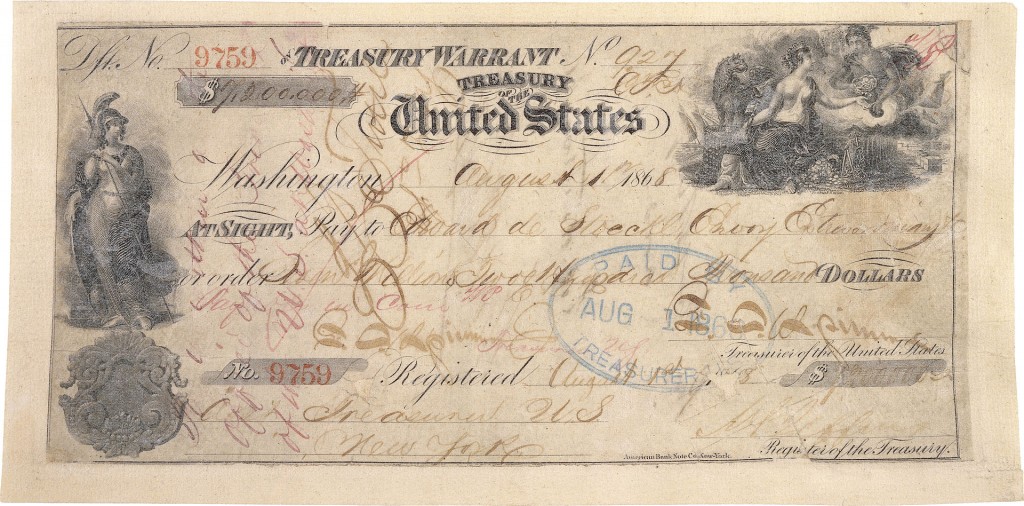When the Day After Friday is Friday
Today is not Friday — it’s Tuesday. Even if you didn’t know that, you could have figured it out simply by remembering that yesterday was Monday. That’s, generally, how the weekly calendar works: once you learn the days of the week, in order, that order tends not to change. But for every rule, even a simple one as that one, there is often an exception.
The table was set for the calendar glitch in April of 1867. The United States agreed to purchase Alaska from Russia for $7.2 million (by check, as seen below) — that’s a bit shy of $125 million in today’s dollars.

Six months later, America took possession of Alaska and began the process of incorporating the new region into the nation as a whole. The “Department of Alaska,” as the area was known from 1867 until 1884, officially became part of the United States on Friday, October 18, 1867.
For the few people who lived in Alaska, this changeover was probably mostly seamless. But the calendar was an exception. Their new nation, the United States, used the Gregorian calendar. But their old nation, Russia used the Julian one. So when Alaska switched countries, it also switched calendars. That required a shift from October 6, 1867 (under the Julian calendar) to October 19, 1867 (in the Gregorian system). But as far as the days of the week were concerned, that should have been fine — October 6th on the Julian calendar was a Friday, and October 19th on the Gregorian was a Saturday. Yes, Alaska was going to lose twelve days in a sense, but it wouldn’t lose the weekend.
That required another glitch — one involving time zones. When Alaska was a Russian territory, the International Date Line ran between Alaska and Canada, putting Russia-controlled Alaska on the same day as its then-parent nation. This meant Alaska was often on a different day altogether than its new owner, the United States. That couldn’t continue once Alaska changed hands. The easy solution was to shift Alaska’s time zone so that it was on the American side of the Date Line. In effect, when Alaska shifted to America, the Date Line shifted, too — it now runs between Alaska and Russia.
But that wasn’t the only effect of the time zone shift. Alaska ended up losing one of the 12 days it gained, moving to October 18th instead of the 19th. And it also lost a day of the week in the process. Instead of going from Friday (the 6th) to Saturday (the 19th), it went from Friday to Friday. It’s probably the only example of a place having two Fridays in a row — and the only time that Friday didn’t lead into the weekend.
Bonus fact: Russia wouldn’t switch from the Julian calendar to the Gregorian until after the Bolshevik Revolution in 1917, becoming one of the last nations to do so. This created another oddity. The Bolshevik Revolution is often called the “October Revolution” despite the fact that it began in November for most of the world; it was still October under the Russian-used Julian system.
Double bonus!: The Alaskan village of Kotzebue only had one Friday during the week of August 3, 1986 — August 8th was the Friday — but that Friday had something unique: two sunsets. For Arctic Circle villages like Kotzebue, the time the sun is out can be weird to being with. But add in some human tinkering and it gets weirder. In 1983, the state went down from four time zones to two, in an effort to create more unity among the states’ residents. As a result, Kotzebue’s clocks often do not tell a meaningful story about when the village experiences daylight. On August 7, 1986, the sun didn’t set at night — sunset came just a few minutes after midnight the next day, August 8th. The sun rose later that morning, at 5:53 AM. But the sun didn’t last the rest of the day; as UPI reported, it set, for the second time, at 11:56 PM.
From the Archives: The Town in Saskatchewan That’s Also in Alberta: A Daylight Saving Time mess.
Related: “Looking for Alaska” by John Green. It’s teen-lit, not history.
